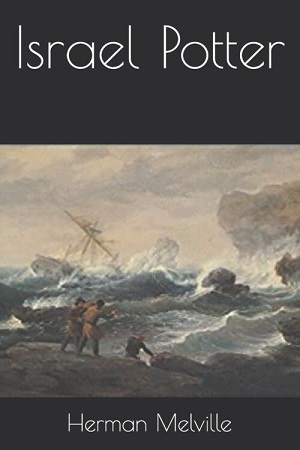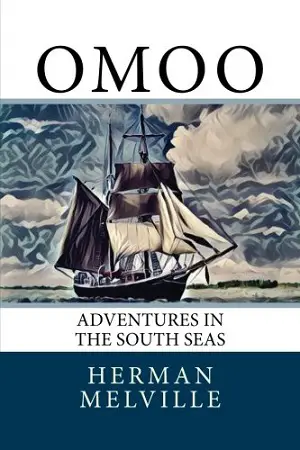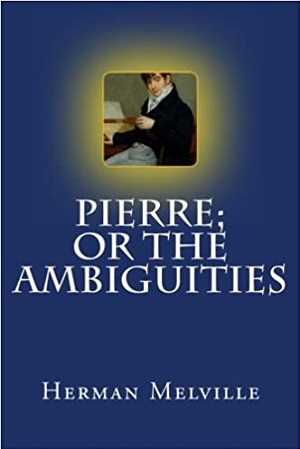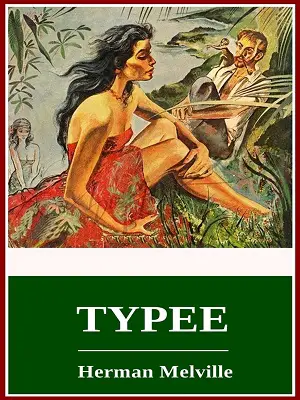Set sail on an epic literary journey with our free collection of Herman Melville books in PDF format.
Herman Melville, one of America’s greatest authors, is celebrated for his profound explorations of human nature, ambition, and the vastness of the natural world. His works are timeless reflections on courage, obsession, and the human condition.
From the monumental Moby-Dick, a tale of revenge and the sea, to the thought-provoking Bartleby, the Scrivener and other captivating stories, Herman Melville’s writing captivates readers with its depth and imagination.
Perfect for fans of adventure, philosophy, and classic literature, this collection is a treasure trove of stories that have inspired readers for generations.
Download these Herman Melville books in PDF now and experience the genius of a literary icon who mastered the art of storytelling.
1) Bartleby The Scrivener A Story Of Wall Street

Bartleby, The Scrivener is a short story by Herman Melville, first published in 1853. The central character is so striking and the story so powerful that it has fascinated readers and critics alike.
A New York lawyer in the mid-19th century decides to hire a new scrivener. Heeding the lawyer's advertisement, a young man appears at his office door characterized as a "pale, clean, pitifully respectable, incurably forlorn" figure. It was Bartleby. At first, the new scrivener worked doing what was expected of him: copying.
This is an intriguing moral allegory set in the business world of mid-19th century New York. Bartleby forces his employer to confront the most basic questions of human responsibility, and torments the latter's conscience, even after Bartleby's dismissal.
2) Battle Pieces and Aspects of the War

Battle Pieces and Aspects of War is a book of poetry, specifically 72 lyrical and narrative poems. Its plot revolves around the battles and personalities of the American Civil War and its aftermath. It also includes notes in which the author sets out his ideas on how reconstruction should be carried out after the war.
It is divided into two sections: The first is the longer section and focuses on the battles. The second, shorter section consists of epitaphs and requiems. It was published in 1866, a year after the end of the war, and its initial reception was not entirely favorable.
Among the poems are "The Portent", "A Requiem For Soldiers Lost In Ocean Transports", "The Frenzy In The Wake Sherman's Advance Through The Carolinas", "Look-Out Mountain The Night Fight", and "On the Slain at Chickamauga".
3) I and My Chimney

I and My Chimney is a short story originally published in 1856. In a humorous style (which may or may not be to the reader's liking) it tells the story of a man and his cherished chimney.
The plot revolves around an old man's dispute with his wife over the future of a chimney placed in the center of their home. The man wants to keep it at all costs, while the wife wants to remove it because its large size hinders comfort inside the house, creating domestic discomfort and inconvenience.
It is said that although this is a fictional story it is based on the huge Arrowhead chimney, in fact, in honor of this book its opening paragraphs are printed on this chimney.
4) Israel Potter

It is a book based on an autobiography Melville acquired in the 1840s, entitled Life and Remarkable Adventures of Israel R. Potter. Israel Potter was published in the year 1855.
The story is set during the American Revolution, where our protagonist participates in the Battle of Bunker Hill, receiving multiple wounds. Contrary to what many would think or do, he decides to volunteer to continue fighting after hearing a speech by George Washington.
This time it is his turn to do so at sea, where he is unfortunately captured by the British navy and taken to England. Fortunately he manages to escape, which will trigger a series of extraordinary adventures that Israel will face with courage. He will also cross paths with renowned characters such as King George III and Benjamin Franklin, who pressure him to work as a spy.
5) John Marr and Other Poems

Melville is recognized as a great writer of novels and short stories, but he also dabbled in poetry. He may not be well known for the latter, but his work is definitely something worth reading, as he was very capable of mastering the meter.
His collection entitled John Marr and Other Poems consists of a series of short and long lyric poems in which the writer makes clear his sensitivity, his reactions to how life was lived in his time, his opinions on the political issues of the day and events such as the Civil War. In this compendium we find a mixture of marine and battle poems.
In John Marr we have an old sailor who has left the sea for the vastness of the prairies. Those who inhabit the place where he arrives, although kind, he considers them somewhat rigid and lacking in freedom and geniality.
6) Mardi and A Voyage Thither Vol I

Mardi and A Voyage Thither Vol I chronicles the travels of a sailor who leaves a whaling ship to explore the South Pacific. This book can be said to have a very varied structure, as it moves from being an adventure story, to a romance story, to a travelogue.
Beginning as an escape and survival narrative, it becomes a romance story when the narrator rescues a woman from a difficult situation and falls in love with her. When the woman mysteriously disappears, he starts looking for her among the isles of the Mardi Archipelago.
At this point it becomes a more philosophical story, as each isles holds symbolic meanings, and the protagonists discuss the social conventions, political structure and religious practices of each isle. Later, it changes style again, becoming a travelogue that mentions the sights and tastes that can be experienced on Mardi.
7) Mardi And A Voyage Thither Vol II

Mardi And A Voyage Thither Vol II continues the story of the anonymous narrator who decides, together with a friend, to escape from a whaling ship (and its unsuccessful voyage) in search of land in the South Pacific, to then devote himself to the search for a lost woman, going from one place to another of the archipelago.
This novel includes political and philosophical reflections, adventure and romanticism, which for some readers may be somewhat tedious and even incoherent, but what cannot be denied is that it presents -in an "unpolished" state- all the good elements that Melville later developed in Moby-Dick, taking them to their highest point.
This work is undoubtedly of great interest to scholars of the American novelist, and some even say that it is impossible to properly understand Moby-Dick without having first read Mardi, an adventure story with very real and vivid characters.
8) Moby Dick or The Whale

Moby Dick is a novel published in 1851. It narrates the voyage of the whaling ship Pequod, commanded by Captain Ahab, along with Ishmael and the harpooner Queequeg in the obsessive and self-destructive pursuit of a great white sperm whale.
Apart from the pursuit and evolution of its characters, the novel's subject matter is eminently encyclopedic, as it includes detailed and extensive descriptions of whaling in the 19th century and a multitude of other details about the seafaring life of the time.
Perhaps for this reason the novel was not a commercial success when it was first published, although it later served to cement the author's reputation and place him among the best American writers.
9) Omoo Adventures In The South Seas

Omoo Adventures In The South Seas was first published in 1847. It is the sequel to his 1846 account of the South Seas, Typee, and continues where its prequel ends.
In it, the unnamed protagonist and narrator escapes from the island of Nuku Hiva and joins the crew of a whaling ship bound for Tahiti. There he meets and befriends the vessel’s surgeon, known as Dr. Long Ghost. Subsequently a mutiny occurs and a third of the crew is imprisoned.
According to Melville himself this is an autobiographical book, which was written from his experiences in the South Pacific in the 1840s. However, it was later discovered that, in addition to relying on his memories and inventions, the author also relied on a large number of reference books to write it.
10) Pierre or The Ambiguities

Pierre or The Ambiguities is the American writer's seventh book, first published in New York in 1852.
The novel, which uses many conventions of Gothic fiction, develops the psychological, sexual, and familial tensions between Pierre Glendinning; his widowed mother; Glendinning Stanley, his cousin; Lucy Tartan, his fiancée; and Isabel Banford, who is revealed to be his half-sister.
According to scholar Henry A. Murray, in writing Pierre Melville "set out to write his spiritual autobiography in novel form" rather than incidentally experimenting and incorporating some personal experience into the novel.
Published after the lukewarm reaction to Moby-Dick, Pierre was a financial and critical disaster. Critics universally condemned its morals and style. More recent critics have shown greater sympathy for the book, seeing it as a "psychological novel - a study of the moods, thought processes, and perceptions of its hero".
11) RedBurn His First Voyage

Redburn is Herman Melville's fourth novel in which he moves away from the remote and romantic settings of his early works. Redburn is also a rehearsal for all that was to follow: the meticulous and humanistic reportage of White-Jacket, the diabolical atmosphere of Moby-Dick and the elegy of the "handsome sailor" in Billy Budd.
In the play, the young Wellingborough Redburn decides to face his destiny and satisfy his adventurous spirit by going to sea. Enrolled as a cabin boy on a merchant ship, his good education, his puritanical morals and his physical frailty do not help him to adapt to the harsh conditions of the voyage, in which, one by one, all his dreams of youthful glory fall.
A story of initiation in which the author of Moby-Dick recreated his first voyage as a sailor.
12) The Apple Tree Table

The Apple Tree Table is a ghost story of agile and simple reading that portrays with a certain irony the superstitions and fears of the unknown. As usual in horror and ghost stories, the narration is in the first person, which favors the atmosphere of uncertainty experienced by the reader.
The narrator is an old man living in an old New England house, who finds a strange old table in the attic and decides to use it. After this, he begins to hear strange noises, plus, from inside the table, bugs begin to crawl out.
Although the ending of the book may not be to the liking of some readers, if you are a fan of the genre we encourage you to read this ghost story. It seems to prove that there is often a mundane explanation for things.
13) The Confidence Man His Masquerade

The Confidence-Man: His Masquerade, is Melville's last novel. It was first published on April Fool's Day 1857, being in fact the exact day on which it is set. It introduces us to the passengers of a steamboat as they travel down the Mississippi River to New Orleans, where its central character, The Confidence-Man, attempts to test their confidence and questions their honesty.
Major characters, potentially attempting to deceive themselves, include Guinea, an African-American crippled beggar; Henry Roberts, a country merchant; John Truman, president and transfer agent for the Black Rapids Coal Company, Colonel John Moredock, among many others.
Among the themes discussed in the novel are sincerity, morality, religiosity, materialism and cynicism. It could be said that this book is a precursor of 20th century literary currents such as nihilism and existentialism.
14) The Piazza Tales

The Piazza Tales is a collection of six short stories. In the introductory story, "The Piazza", the protagonist idealizes a house located in the mountains that he contemplates from his piazza. One day he goes there and meets Marianna, a woman who longs to see the lucky man who lives in the white house she gazes at from her window.
It also includes three of Melville's most important stories in the genre of short fiction: "Bartleby, the Scrivener", "Benito Cereno" and "The Encantadas, or Enchanted Isles". In the first, Bartleby, the new employee of a New York lawyer's office, refuses to copy documents without giving any explanation other than "I would prefer not to".
"Las Encantadas" consists of ten sketches based on Melville's memories of the Galapagos Islands during his years as a whaler. The other two stories are "The Lightning-Rod Man" and "The Bell-Tower".
15) Typee a Romance of the South Seas

Typee: A Peep at Polynesian Life, is the first book by the American writer. It was first published in London and then in New York in 1846.
It is considered a classic of travel literature, based partly on Melville's actual experiences on the island of Nuku Hiva in 1842 and freely supplemented with content from other works. This book was Melville's most popular work, becoming known as "the man who lived among the cannibals".
Typee comes from the name of the province Taipivai.
Although it was the same version that was published in London and New York as the first edition, Melville omitted important references to missionaries and Christianity in the second American edition, at the request of the publisher. Later editions included the "Sequel: The Story of Toby" written by Melville to explain what happened to Toby.
16) World On A Man Of War

World On A Man Of War or White Jacket was first published in 1850. This book is based on Melville's experiences during his 14 months of service in the U.S. Navy as a common seaman aboard the frigate USS United States.
For many it is his most politically strident work, as he harshly criticizes aspects of American naval life and also making graphic descriptions of the floggings that took place, in fact he was instrumental in the abolition of flogging in the U.S. Navy.
The protagonist and narrator is a rookie sailor nicknamed White-Jacket as his jacket is the only white one on board. Many of the actual crewmen of the USS United States occupy a place in White-Jacket, as is the case of Jack Chase, a British-born sailor described in the story as the epitome of a true and good sailor.







































